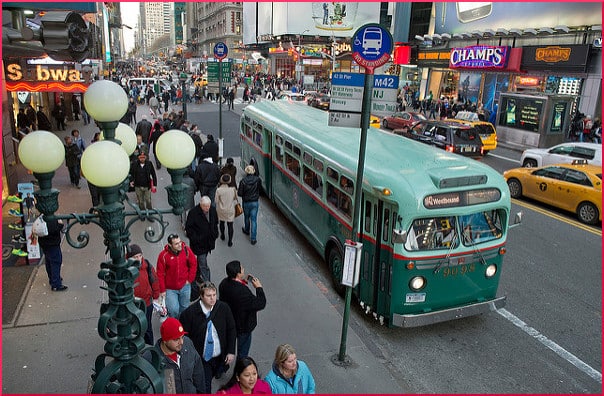
We saw how Portland’s Bureau of Planning and Sustainability found some unexpected answers to its queries about neighborhood stores. Many city dwellers are perfectly okay with traveling out of their immediate area to shop for food. They have their reasons, two of which are lower cost, and the preservation of purely residential neighborhoods.
Despite the satisfaction experienced by some subgroups of citizens, the researchers found that in other parts of town, the people’s relationship to the food supply was less than satisfactory. According to the report:
In Portland, these neighborhoods are generally characterized by inconsistent food access — for example, the grocery store has prices too high for low-income residents, and more affordable smaller stores have few items low-income residents want or need. These areas may be less accessible — be less walkable, have more residents without cars, or have less available transit.
While some people are happy to buy their groceries from a distant megamart, what complicates matters is that the same giant corporation underpays its employees to the point where they can’t afford rent, and wind up living in a hammock in somebody’s backyard. The people who work at the megamart are on food stamps, so all the taxpayers share in subsidizing their employer’s greed. Giving that employer a tax break and a bunch of other freebies to open another megamart hardly seems like the perfect answer.
What to do?
And yet, “Encourage additional food points to locate in underserved areas of the City” is one of the suggested remedies. In some places, encouraging more stores to open is considered the right answer. Another recommendation is to “Provide incentives to small grocers and convenience store owners to stock fresh produce and other healthful food options at affordable prices, including grants for energy-efficient lighting and refrigerators.”
Here is a question: Isn’t the profit motive enough of an incentive? If customers want fresh produce, why are the owners of small groceries and convenience stores not stocking it already, out of sheer self-interest? A basic rule of business is that you plow back some of the profits into improvements.
Some taxpayers ask, “Why should we buy this guy a new refrigerator just because there are poor people in the neighborhood who suffer health consequences from not eating right?” The taxpayers, too, need encouragement. As do the people who don’t even know how to eat right.
One of the report’s accomplishments was to identify the numerous types of Direct Market Solutions, aka food retailers. They are:
- Full-Service Grocery Store
- Independent Grocers (including Specialty Store, Ethnic Market)
- Convenience Stores
- Farmers Markets
- Cooperative Grocery Stores
- Community-Supported Agriculture
- Fruits and Vegetable Stands
- Community Gardens
- Emergency Food
Wheels within wheels
The food desert topic turns out to be incredibly complex and full of surprises. Transportation, for instance, is fraught with connections to other issues like racism, economic inequity, and corporate greed. A previous post finished up with words from one of the people who put together “Foodability — Visioning For Healthful Food Access In Portland.”
It was indeed a visionary document, with some blind spots. The quotation was, “Walking with groceries is not a realistic scenario.” This seems obvious on the face of it, but the implication has a long tail. Grocery shopping by bus cannot help but include some walking at both ends of the trip. So, in practical terms, this means that grocery shopping via public mass transit is not a realistic scenario. And yet it is the precise circumstance with which many thousands of Americans are stuck.
Your responses and feedback are welcome!
Source: “Visioning For Healthful Food Access In Portland,” PDX.edu, June 2009
Photo credit: MTAPhotos on Visualhunt/CC BY

 FAQs and Media Requests:
FAQs and Media Requests: 












One Response